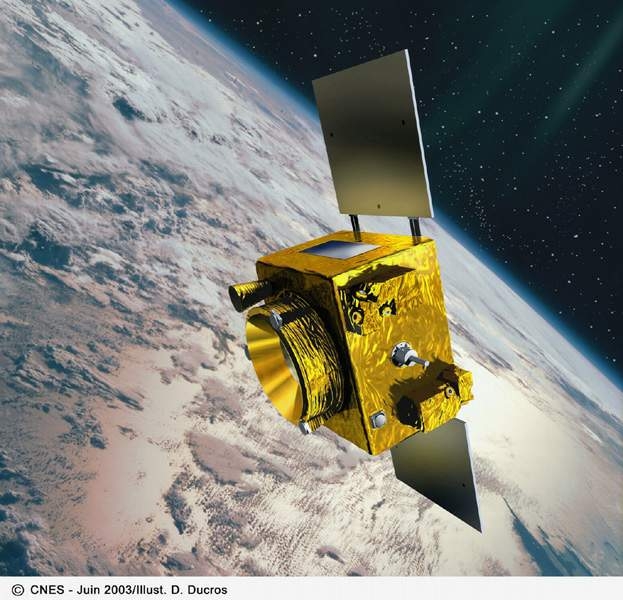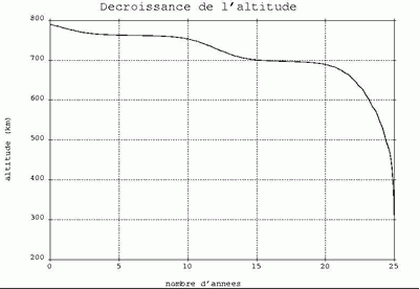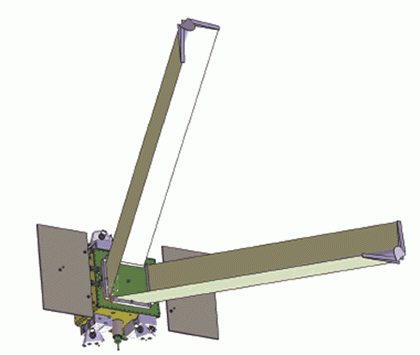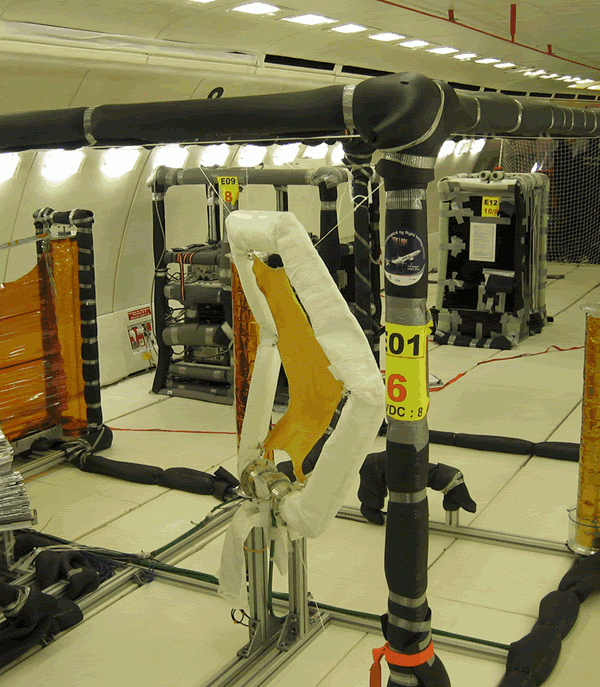
CNES, as a signatory to international treaties committed to reducing space debris, has come up with an original method for deorbiting Microscope: IDEAS, an ultralight structure that will slow the satellite in much the same way as braking parachutes are used on certain fighter aircraft; only IDEAS will be deployed for much longer.


IDEAS spreads its wings

“The idea here was to validate initial unfolding of the tube,” says Loïc Boloh. “We used another model to test deployment of 2 related thin-film membranes that will be used as a sail. We learned a lot from this experiment.” In particular, the tests allowed CNES, which has drafted the specifications for EADS ST to assure the system’s compatibility with the Microscope satellite bus, to fine-tune sail deployment control parameters.
Presentation of the Gossamer experiment on the Airbus Zero-G at the 2007 Paris Air Show. Microgravity deployment tests during a previous parabolic flight test campaign. Crédits : CNES
To meet these tight specifications, engineers had to use exceptional materials like Kapton, a very-thin-film polymer with low temperature sensitivity that makes up most of the sail. The Kapton is laid on a grid of Nomex, another highly heat-resistant fibre. And to prevent the sail from tearing during its 25-year odyssey in space, aluminium to protect against solar ultraviolet radiation and silicon oxide to counter atomic oxygen corrosion were also used.These ultralight structure deployment tests, the first to be performed on parabolic flights in Europe, were a great success. On the strength of these very promising results, CNES will be pursuing the fruitful engineering collaboration with EADS ST thanks to which Microscope will one day set sail and head back to Earth.
... Previous